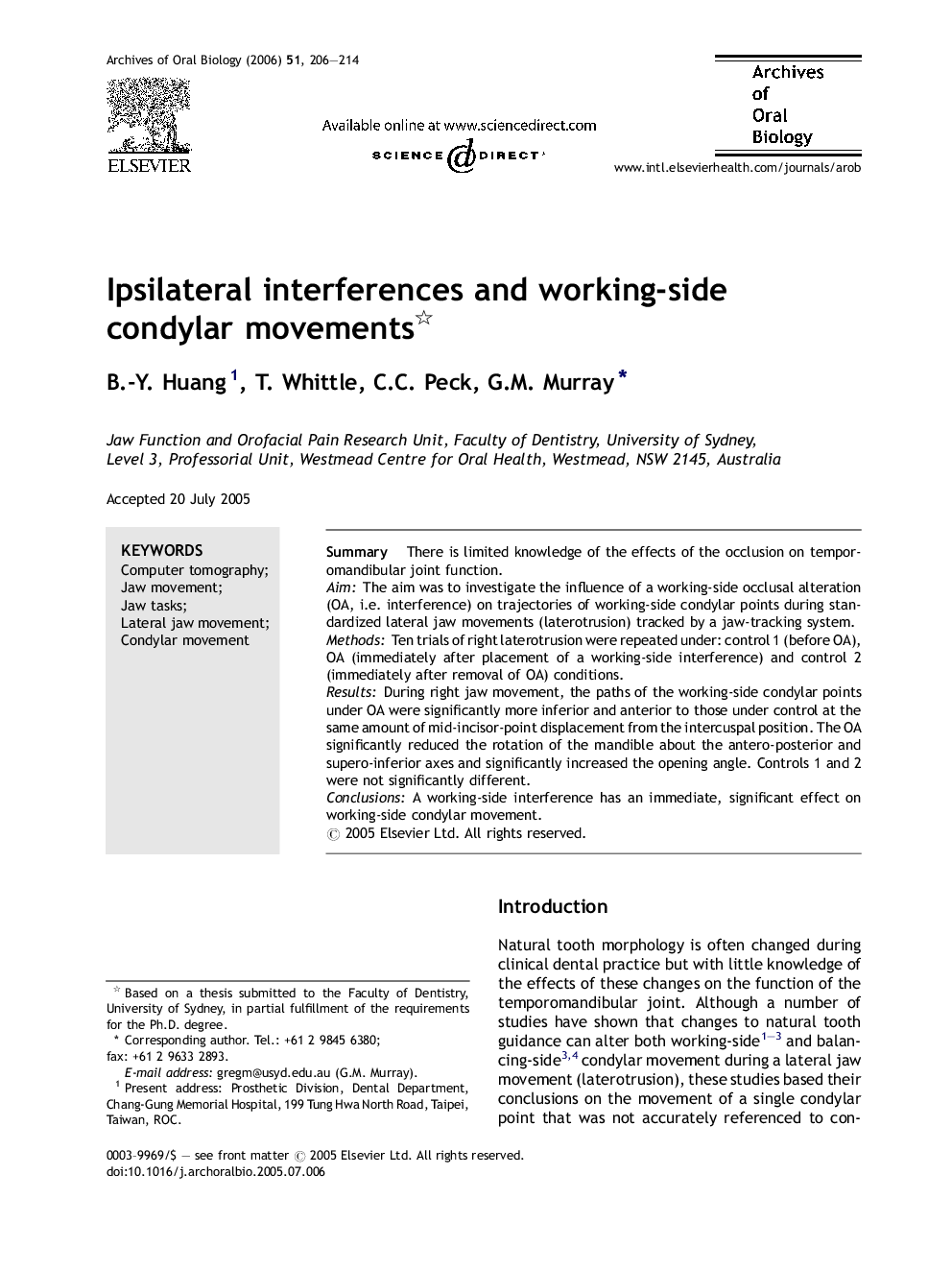| Article ID | Journal | Published Year | Pages | File Type |
|---|---|---|---|---|
| 3122029 | Archives of Oral Biology | 2006 | 9 Pages |
SummaryThere is limited knowledge of the effects of the occlusion on temporomandibular joint function.AimThe aim was to investigate the influence of a working-side occlusal alteration (OA, i.e. interference) on trajectories of working-side condylar points during standardized lateral jaw movements (laterotrusion) tracked by a jaw-tracking system.MethodsTen trials of right laterotrusion were repeated under: control 1 (before OA), OA (immediately after placement of a working-side interference) and control 2 (immediately after removal of OA) conditions.ResultsDuring right jaw movement, the paths of the working-side condylar points under OA were significantly more inferior and anterior to those under control at the same amount of mid-incisor-point displacement from the intercuspal position. The OA significantly reduced the rotation of the mandible about the antero-posterior and supero-inferior axes and significantly increased the opening angle. Controls 1 and 2 were not significantly different.ConclusionsA working-side interference has an immediate, significant effect on working-side condylar movement.
